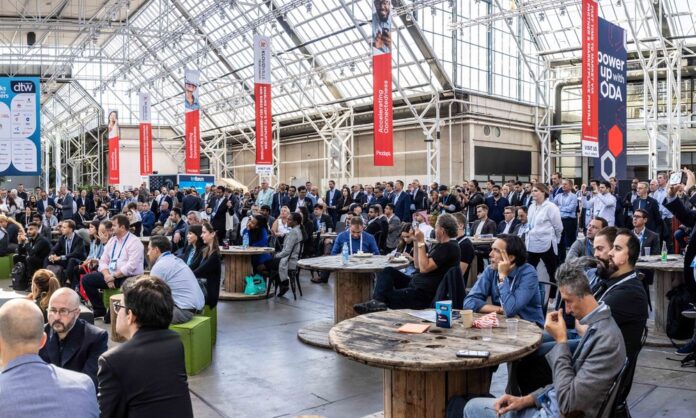According to TM Forum, network operators have just three years left to get it right
TM Forum’s annual flagship event, DTW – Ignite kicked of today in Copenhagen. DTW stands for Digital World Transformation. The added ‘Ignite’ suffix is reflect the urgency of the trade association’s plea to the industry to reinvent itself or go bust. The Forum has been delivering for a decade or so and not without justification.
On this occasion, there’s sell-by date on the emergency – three years.
Nik Willetts, CEO and President of the Forum, described Ignite’s kick-off “as a red code moment” and issued a call to action. Last week the Forum published the CEO Playbook: Reigniting telecoms growth as a how-to guide on the action required.
1 billion is a big number
Despite the three-year warning, there are apparently signs of progress and reasons for the Forum to be cheerful. For starters, it announced that number of operators using its open digital architecture (ODA) has increased by five. CityFibre, Deutsche Telekom, Orange, Telia and Telstra have joined Axiata, Jio, Vodafone Group and TELUS in being verified as ‘Running on ODA’, after lengthy, stiff assessments.
The Forum estimates that operators adhering to ODA principles now collectively have more than 1 billion subscribers. Apparently a good number more are undergoing the verification process.
Big support
Then a bunch of big names have launched cloud-ready ODA Canvases*. “The ODA Canvases built by AWS, China Mobile Cloud, Google Cloud, Microsoft and Oracle provide a standardized environment for ODA-compliant software to be deployed onto any cloud platform,” according to the press briefing.
The ODA is the ‘other half’ of Forum’s approach to creating a standardised, plug and play operational environment for telcos’ IT. The original half, the Forum’s open APIs, were launched in 2016 although work had begun in 2013. We are now up to Gen5 of these APIs which are intended to dovetail with the GSMA’s Open Gateway initiative, launched at MWC in February.
Willetts claims, “With many more [communication service providers] on their way to achieving Running on ODA status, this is a serious step forward in getting our industry fit to reignite growth.”
Vendors Alvatross, CSG, Ericsson, Hansen Technologies, Huawei, Netcracker, Oracle, and Whale Cloud have also joined the party, each offering at least one product line that conforms to ODA.
Jio hosts Innovation Hub
Then there’s Innovation Hub at Reliance Jio’s Corporate Park Campus in Navi Mumbai, India. It will host – physically and virtually speaking – teams from the initiative’s founding members. They are Accenture, Deutsche Telekom, Google Cloud, Orange, Reliance Jio, Telenor and Vodafone.
The idea is that the hub will build on the Forum’s long established Catalyst programme whereby operators, singly or in groups, assemble teams of willing volunteer vendors, systems integrators and others to build a prototype solution to solve a real-life operational or business need, in the space of a very few months. Some Catalysts have multiple phases and the teams can change as they evolve.
The intent is that the hub will provide longer term resources and see more of the ingenuity turned into industrialised solutions, complete with working code and proven “in operational or shadow-operational environments”.
The hub’s first projects will be:
- Generative AI and Large Language Models (LLMs) – exploring the potential of Gen AI and LLMs for telcos, creating architectural blueprints for the adoption of GenAI together with supporting demonstrations.
- Adopting ODA to get rid of ‘technology debt’ and retire legacy kit, establishing migration patterns and a library of adapters, APIs and other assets suitable for a modular, replicable, softwarised architecture.
- ODA Accelerator to showcase components of the framework in situ, running on multiple hyperscaler instances of the ODA Canvas. In other words, demonstrating a plug-n-play environment that give operators a choice of hyperscaler partners. The idea is it will lead to the standardization and therefore transform the management of telcos’ operational IT.
The hub and its projects will be managed by the TM Forum’s CTO office, with a new, dedicated team based in Mumbai. Founder members have committed to providing seconded resources for the first pilot projects. See more information about the Innovation Hub here.
* Check out the Business Model Canvas, invented by Alexander Osterwalder and Yves Pigneur in 2010


